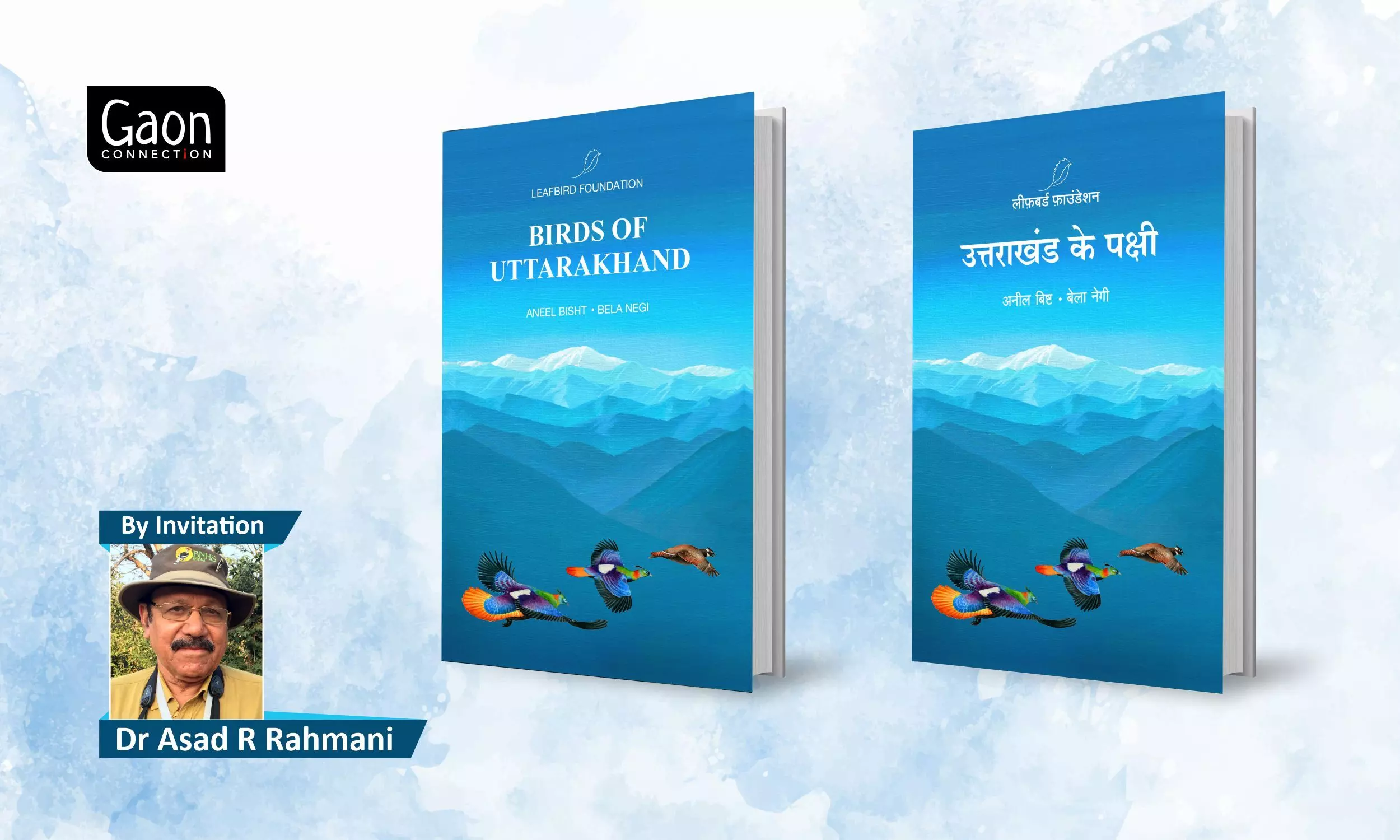Birds of Uttarakhand and their 'paan-beeri-cigarette' or 'teen-tola-teetaras'
The book, Birds of Uttarakhand, has nearly 500 bird illustrations, their qualities vary from artists to artists but most are good enough to help in identification of the species. Sometimes bird call is transcribed in word as the locals hear it.
 Asad R. Rahmani 9 May 2022 7:22 AM GMT
Asad R. Rahmani 9 May 2022 7:22 AM GMT

It is always a delight to get a bird book for review as reading such books adds to my knowledge and the book is added in my personal library. If the book is from a fabulous state like Uttarakhand, the delight is manifold. And, thirdly if the book is written by amateurs, I leave everything and read/review it.
Birds of Uttarakhand, authored by Aneel Bisht and Bela Negi, and published by Mumbai-based Leafbird Foundation, has all these qualities.
Aneel Bisht is a retired teacher of English "with no formal training in ornithology or arts." She lives in Nainital and got her first introduction of birds when she was presented a copy of Indian Hill Birds, authored by Salim Ali, more than 50 years ago. Bela Negi, born in a village in Kumaon, is a film maker based in Mumbai. She is the founder trustee of Leafbird Foundation that works with "rural communities towards preserving and highlighting the natural beauty of her beloved hills."
Ten illustrators of the book have an equally distinguished career. For example, Surinder J. Singh "is a mountain girl of 80 years who chose to make the hills of Uttarakhand her home." Ved Chandra Madesia is an audio designer/engineer (FTII, Pune), Medhavini Yadav is a self-taught artist, a trained textile designer, nature admirer and a mother, and Aparajita Bisht is a "colour-o-holic" and dips into paints.
No wonder, the book has nearly 500 bird illustrations, their qualities vary from artists to artists but most are good enough to help in identification of the species. Common name, scientific name, (in some cases older or alternative name), morphological characters (termed 'appearance'), range height in metres, habitat, habits, and call are given along with the illustration(s) of each species.
Sometimes bird call is transcribed in word as the locals hear it. For example, Black Francolin call sounds like "paan-beeri-cigarette" or "teen-tola-teetaras" (three ounces of partridge gravy)! Oriole calls that are almost impossible to write in words are not mentioned. Only sonogram can write the fluid call of the Golden Oriole.
A small introduction of one page is given to each major group of birds, for example, pheasants, raptors, woodpeckers, corvids, and so on. As expected from an English teacher (Aneel Bisht), the language is trite and flawless. For example, writing about Great Pied Hornbill, the first sentence "First time sighting as exciting as a tiger sighting!". How apt is the introduction of this grand bird!
Regarding habits, the authors write "Seen in pairs or small parties. Shy. Mostly fruit-eating but also forage along branches looking for insects, small mammals or lizards. Their flight can be heard from a kilometre away."
In this 234-page book, all birds found in Uttarakhand are not illustrated but a brief description is given. For example, among Cormorants, only Indian Cormorant is illustrated and described but Great and Little cormorants and Darter are also briefly mentioned. So is the case of storks, nightjars, raptors and other groups.
Major drawback of the book is that some of the illustrations are not up to the mark of the high quality of the book. Actually, this is a weakness of our country that we do not have good bird and mammal illustrators like we have in UK, Germany, Japan, the USA and other countries. This is the art and science that needs to be promoted in India.
A good step has been taken by the Leafbird Foundation by engaging 10 artists – all very talented. Hopefully this book will encourage many 'hidden' artists/illustrators to come out. Animal illustration does not only need artistic talent but also understanding of the species, their postures, their colour variations, morphology and behaviour. All good illustrators are also good naturalists. Reading brief CVs of 10 illustrators (page ix and x), I find that everyone is interested in Nature.
It will be not out of place to point out a few mistakes. Ibisbill is seen in winter in the streams of lower Himalayas (e.g. Ramganga in Corbett, Jai-Bhoroli near Nameri in Assam) but it is a bird of high- altitude rivers (1,700 to 4,000 m). It is not found in the plains. Similarly, Common Sandpiper is a winter migrant, not "summer visitor".
Uttarakhand is a spectacularly diverse state, from hot jungles to lofty cold snow-peak mountains. A few photographs of various habitats would have enhanced the value of the book. Nonetheless, this is a treasured book and I congratulate Leafbird Foundation, the authors and illustrators. On page xi, 14 supporters of the book are listed. I am sure they are satisfied by the outcome.
Bela Negi's dream to create "many more birdwatching hubs all over Uttarakhand and make eco-tourism a business that the villagers can benefit directly from" will see fructification soon. This book will be a great help.
Dr Rahmani is the former director of Bombay Natural History Society. He was Global Council Member of BirdLife International, UK (2006-2013), and Chairperson, BirdLife Asia Council (2006-2013). He has published 26 books and nearly 150 peer-reviewed scientific papers and more than 100 book reviews and editorials.
#uttarakhand #birds #wildlife #Himalaya book review #story
More Stories




